The Trek Top Fuel was updated at the back-end of 2021 and the result is a knock-out bike for all-round trail riding. So much so that, after pitting the Top Fuel against seven of its toughest competitors, it's our Trail Bike of the Year for 2022.
The Top Fuel may be listed within Trek’s menu of cross-country bikes on the brand’s website but, with 120mm of travel at either end, it certainly has a whiff of ‘downcountry’ about it.
And, with a stout 35mm-chassis RockShox SID plugged in up front, tyres with more than a hint of tread and a 66-degree head angle, I wanted to see how far the new Top Fuel pushes into trail territory.
Trek Top Fuel 8 frame and suspension
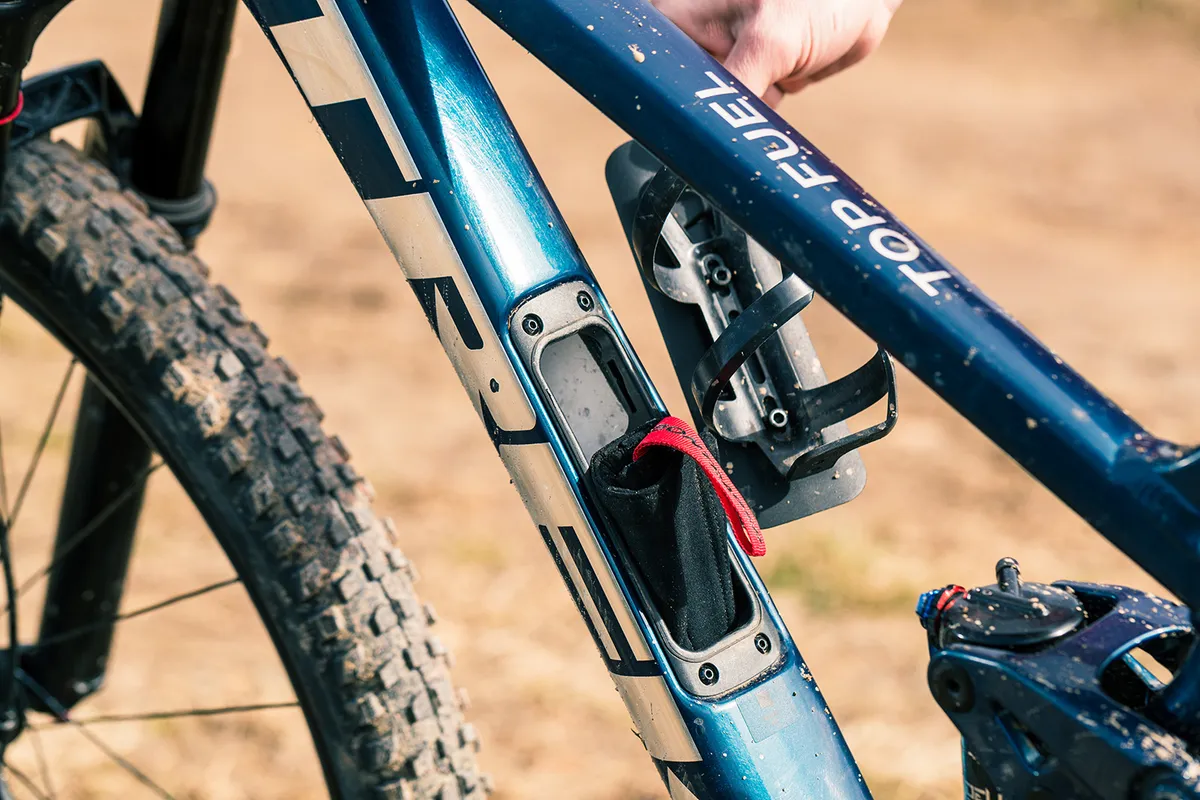
The frame is constructed from Trek’s Alpha Platinum aluminium, with the main tubes manipulated in shape along their length.
Around the head tube, there’s a broad contact point between head, down and top tubes, while down by the threaded bottom bracket the down tube’s orientation changes to give a flatter, fatter surface for the BB shell to be welded onto.
The down tube houses a storage compartment, into which you’ll fit a multi-tool and tube, located under a door that also holds a bottle cage.
Trek admits that it adds weight, but claims it’s important to have in this category of bike. And, as the weight is relatively low, it adds stability by lowering the overall centre of gravity of bike and rider.
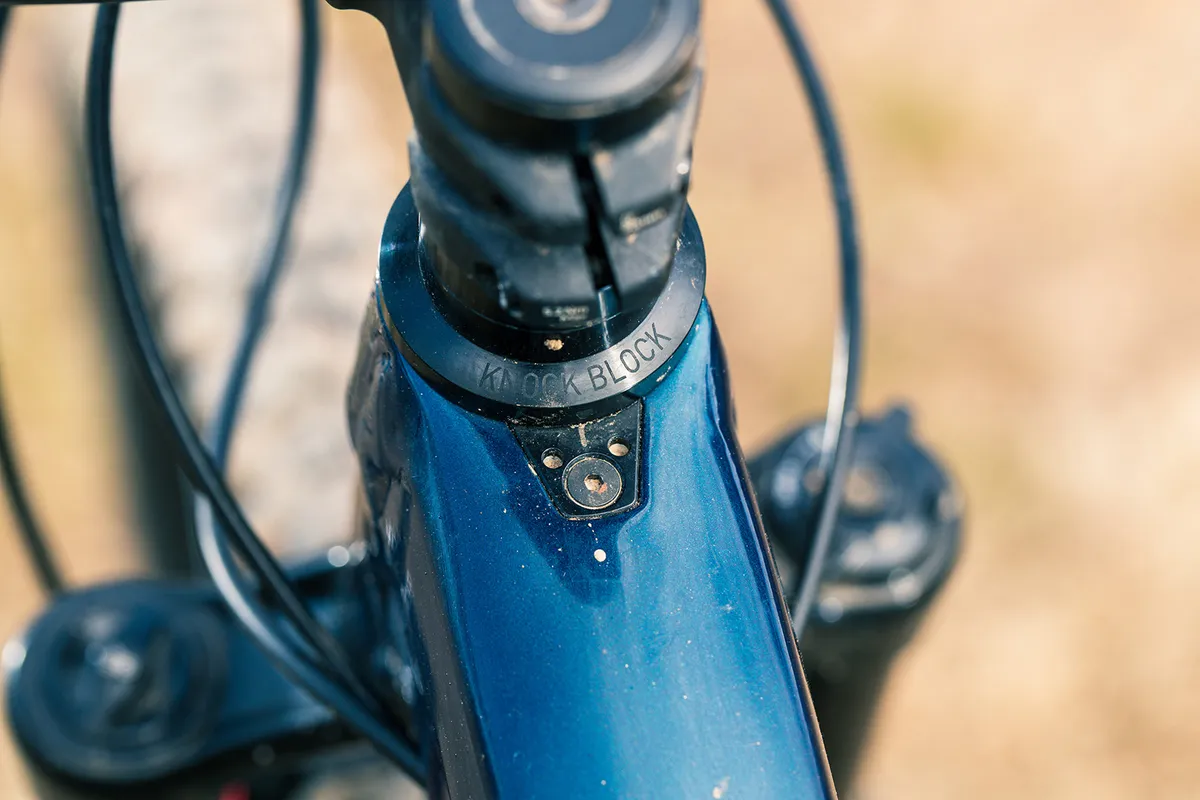
Trek’s contentious Knock Block steering-lock limiter allowed equipped bikes to have a straight down tube to enhance stiffness, and prevented damage from fork top caps on the down tube or low-slung brake levers on the top tube.
But some riders found the 58-degree angle irksome and disliked the compatibility issue caused by choosing to remove the device.
The 2022 Top Fuel features Knock Block 2.0, which has been redesigned to be less extreme and allow an increased steering angle from 58 to 72 degrees.
Top Fuel frames have been designed with more down-tube clearance for fork top caps, doing away with the previously straight, stiffness-promoting down tube found on Knock Block 1.0 bikes.
If both fork top caps clear the down tube and brake levers clear the top tube, Trek says it’s possible for riders to remove the Knock Block 2.0 completely with minimal fuss.
Wheel size is 29in except for the extra-small bike, which comes with 27.5in wheels (and in the 9.8 spec only). All complete bikes come with 2.4in-wide Bontrager tyres, but the frames will take up to a 2.5in, so mud clearance should be ample for UK riding.
Trek uses its APB suspension linkage to give the 120mm of travel. This features a pivot concentric to the rear axle, so is neither a true single-pivot nor four-bar linkage.
The vertically mounted shock is driven by a magnesium rocker link. It’s bulky, to add stiffness, but the use of magnesium saves weight.
The main pivot has been moved forward on the new bike, flattening the anti-squat curve and making it more consistent throughout its travel.
Trek Top Fuel 8 maintenance and durability
Trek hasn’t forgotten the mechanics out there, who will be happy to hear that although the Top Fuel has internally routed cables, Trek has fitted full-length internal sheathing throughout the bike, meaning no fishing around with bent spokes and magnets when it’s time to refresh the outer cables.
Interestingly, Trek has chosen to rid itself of press-fit bottom bracket issues for this bike and return to the venerable old 73mm-wide threaded shell.
While Trek hasn’t commented on the reason for this shift, many feel that the threaded BB is less prone to creaking, and it’s hard to argue with the ease of replacing a threaded BB when compared to its push-fit cousin.
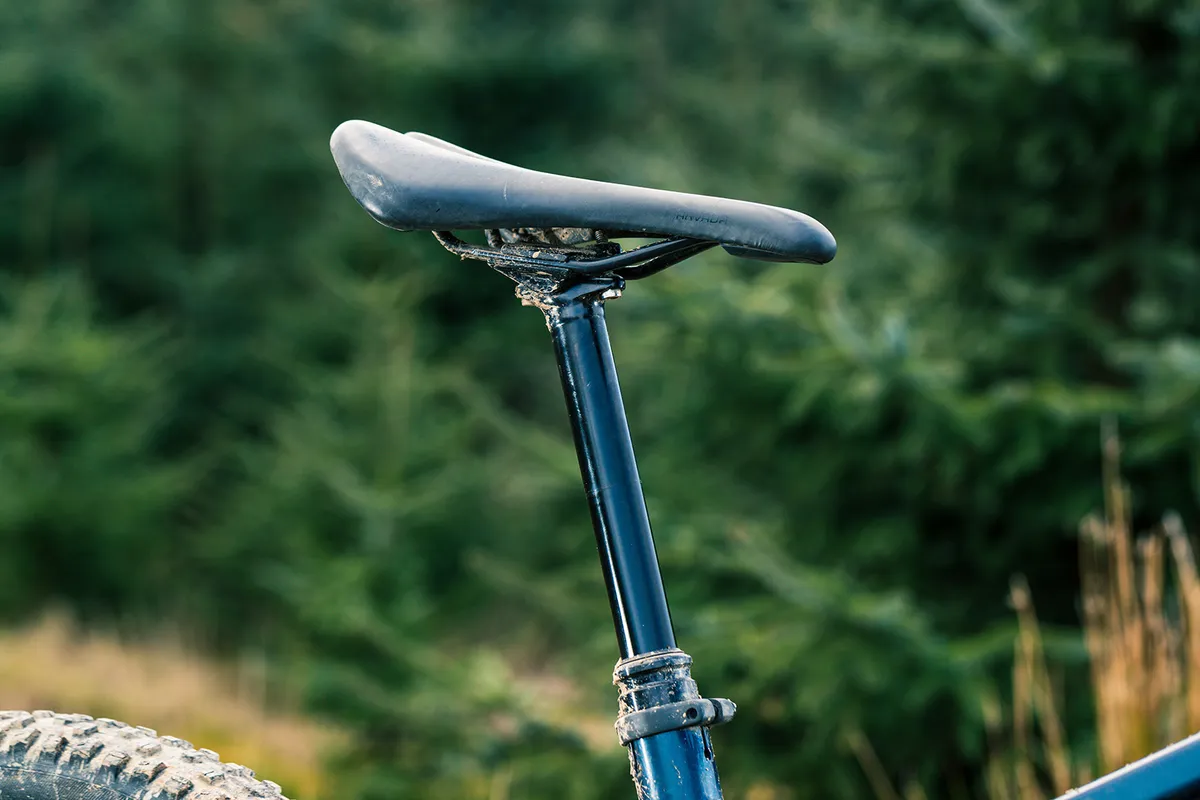
The seat-tube diameter has expanded to the new 34.9mm standard, allowing the next generation of longer dropper posts to be fitted.
The reasoning behind yet another new standard is actually pretty sound. Its girthier chassis boosts stiffness and spreads side-loading more effectively, meaning modern, longer posts retain stiffness when extended, are stronger and experience reduced wear.
According to Trek, the related stiffness improvement in the frame itself (because of the larger-diameter tube and increased surface area at junctions) is “slight”.
Trek is also pleased to extol the burlier nature of the new Top Fuel, by extending warranty coverage to include the fitting of a longer 130mm-travel fork. Making such a move would slacken the head angle and seat tube angle by around 0.5 degrees and raise the bottom bracket by 3mm.
Trek Top Fuel 8 geometry
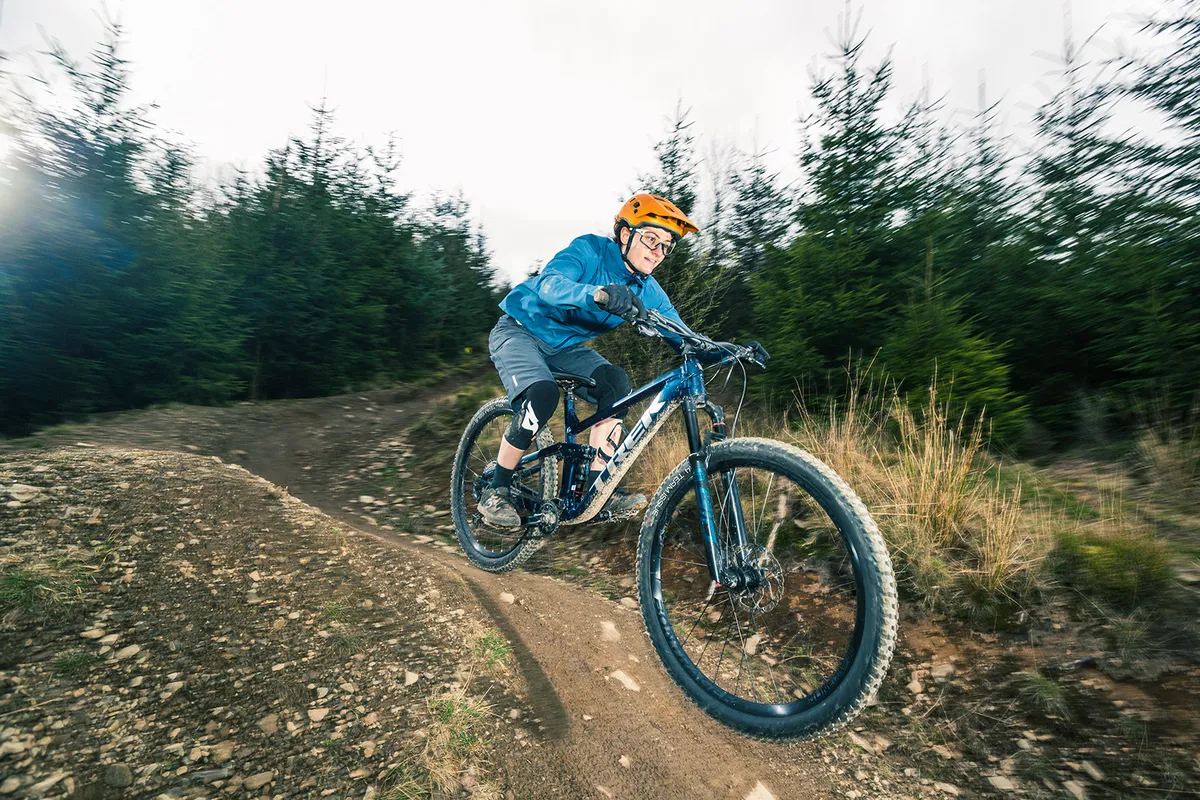
If you looked at the geometry figures in isolation of the suspension travel and website sub-menu, you’d be forgiven for thinking this was a totally modern 140mm trail bike.
The head angle is fairly slack at 66 degrees, while the seat angle is claimed to be 76 degrees. That’s not super-steep, but when your rear end sags less thanks to the reduced travel, its dynamic seat angle should still be pretty pert.
I also measured my test bike, with saddle 71cm above the bottom bracket, at 77.1 degrees – steeper than claimed.
The reach is impressively long at 480mm – a number I’d expect to see on some of the best enduro bikes. This combines with mid-length 435mm chainstays to give a wheelbase of 1,215mm.
The 450mm seat tube is short enough that longer-travel droppers should be within reach of most riders. The size-small bike has a 395mm seat-tube length, for reference.
These figures are for a size large (or 19.5in that Trek also gives) in its low setting. The numbers are similar for the small, medium, medium-large, large, XL and XXL – an impressive spread of sizes.
The Mino Link geometry chip is also provided, which steepens angles by 0.4 degrees, and adds 5mm to the reach. For the purpose of this review, I kept the bike largely in its lower setting.
| | S | M | ML | L | XL | XXL |
|---|---|---|---|---|---|---|
| Seat angle (degrees) | 76 | 76 | 76 | 76 | 76 | 76 |
| Head angle (degrees) | 66 | 66 | 66 | 66 | 66 | 66 |
| Chainstay (mm) | 435 | 435 | 435 | 435 | 435 | 435 |
| Seat tube (mm) | 395 | 420 | 43.5 | 450 | 500 | 540 |
| Top tube (mm) | 568 | 598 | 615 | 631 | 654 | 676 |
| Head tube (mm) | 10 | 10 | 10.5 | 11 | 12.5 | 13.5 |
| Fork offset (mm) | 44 | 44 | 44 | 44 | 44 | 44 |
| Trail (mm) | 118 | 118 | 118 | 118 | 118 | 118 |
| Bottom bracket drop (mm) | 36 | 36 | 36 | 36 | 36 | 36 |
| Bottom bracket height (mm) | 338 | 338 | 338 | 338 | 338 | 338 |
| Wheelbase (mm) | 1151 | 1181 | 1198 | 1215 | 1241 | 1265 |
| Standover (mm) | 715 | 735 | 740 | 745 | 755 | 765 |
| Stack (mm) | 595 | 595 | 600 | 605 | 618 | 627 |
| Reach (mm) | 420 | 450 | 465 | 480 | 500 | 520 |
| Seatpost travel (mm) | 100 | 150 | 150 | 170 | 170 | 170 |
| Crank length (mm) | 170 | 170 | 170 | 170 | 175 | 175 |
Trek Top Fuel 8 specifications
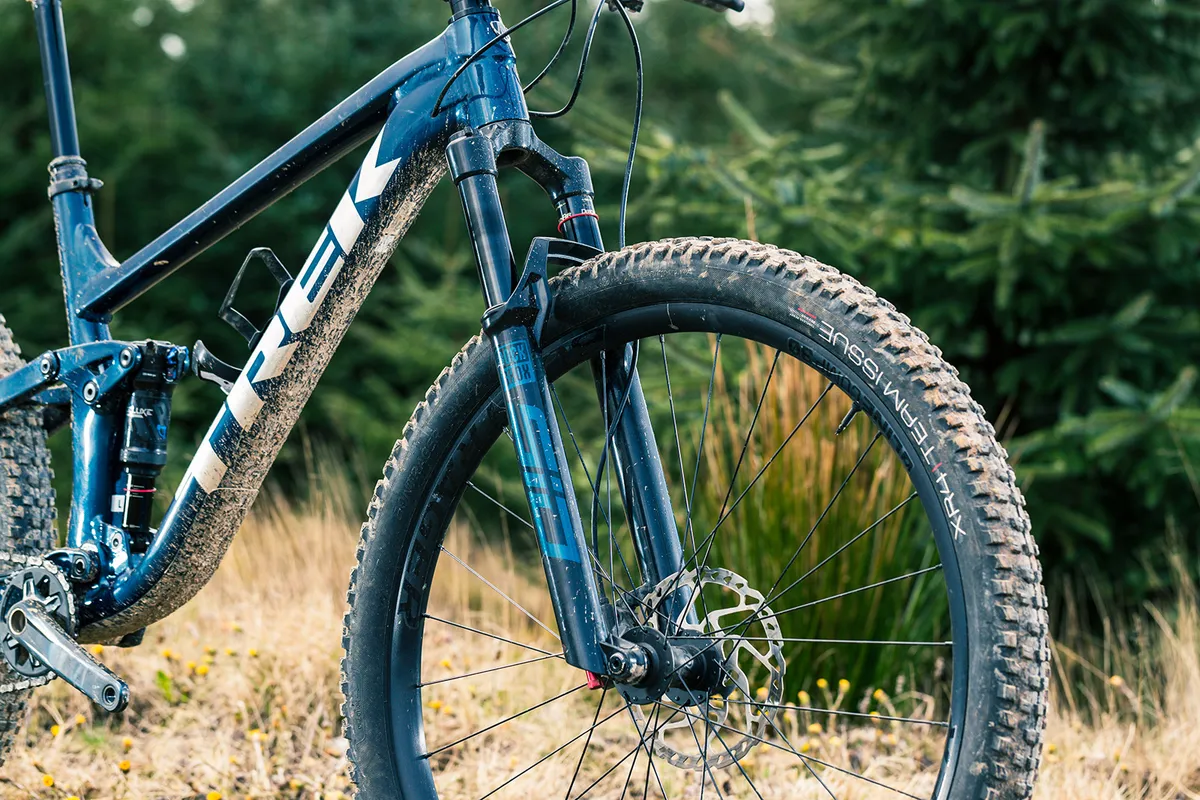
Trek has gone to RockShox for the suspension on the Top Fuel 8, with its SID fork stood up front and a Deluxe Ultimate RC at the back. The shock has three main compression modes, from open to firm, as well as three settings in the open mode for even more fine-tuning.
The most open of these options gives a really light feel to the shock, while the most closed feels very close to the middle setting of the shock, with noticeably more compression damping.
Historically, the SID has been a pared-down XC race fork, and the SID SL still holds that baton.
The SID Select, though, is one of the new-generation burly XC/downcountry/light-trail forks that feature lighter-weight chassis, packing in extra stiffness thanks to 35mm (or 34mm in the case of the Fox 34) stanchions.
It maxes out with 120mm travel, and on this model Top Fuel we get the base-level fork that uses the OEM-only Rush RL damper.
With 120mm of travel, it feels stiffer than a 34, but perhaps not quite as stout as a Pike. The damper might be bottom-end, but it’s still smooth, and remarkably well controlled, with plenty of progression and little in the way of spiking.
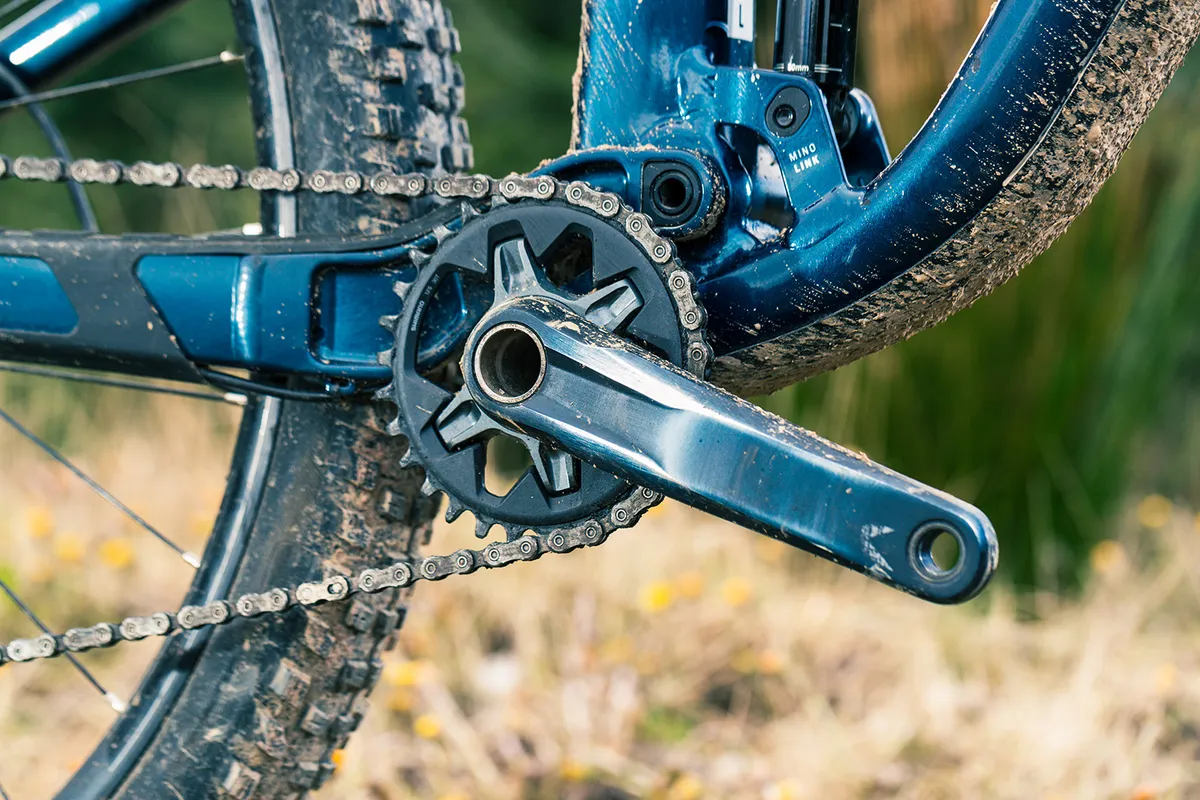
Shimano is used for the drivetrain, with a mixed group of components. The 30t ring sits on a Deore crankset, an SLX chain tugs on a cassette from the same range, while the shifter and derailleur come from the XT family.
Four-piston non-series brakes from Shimano complete the package.
When it comes to wheels, tyres and finishing kit, Trek’s in-house Bontrager components feature heavily. This includes the Line 30 Comp wheels, shod in 2.4in-wide XR4 Team Issue tyres, and an alloy cockpit.
Trek Top Fuel 8 ride impressions
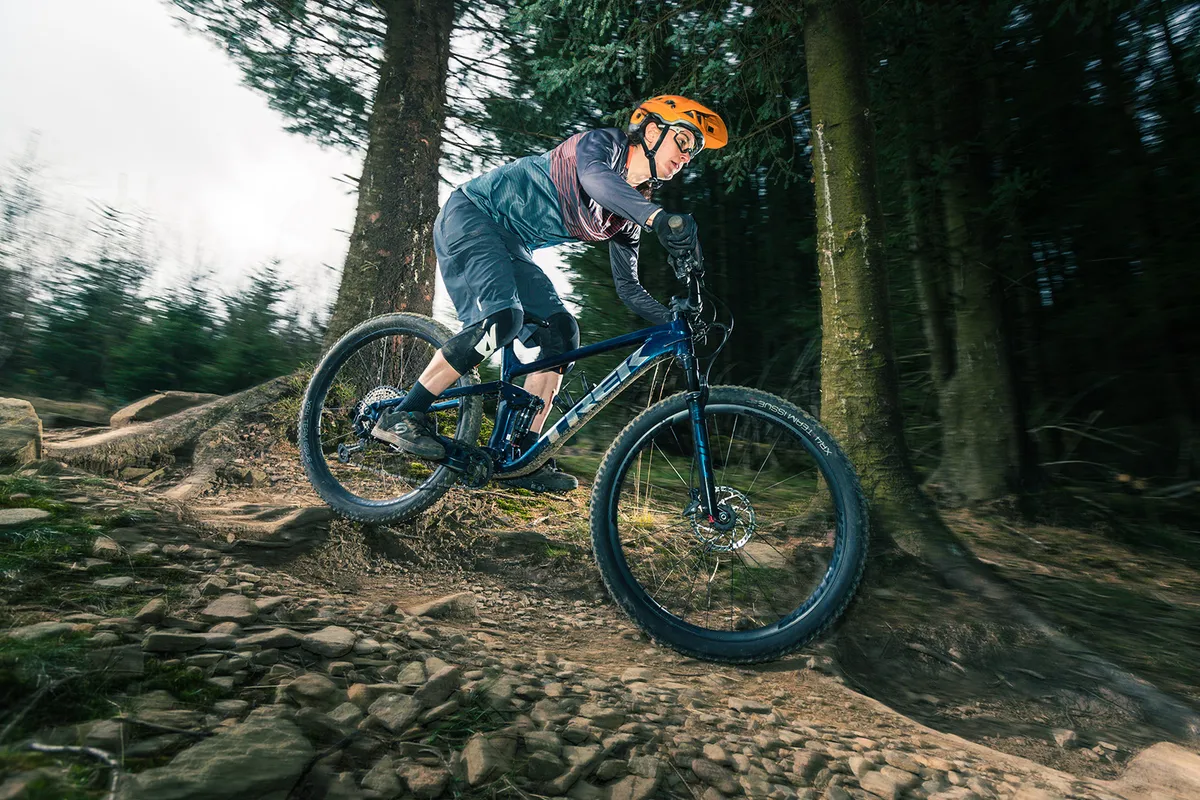
This bike was tested as part of our 2022 Trail Bike of the Year test. It was pitted against seven other bikes, with travel ranging from 120 to 140mm at the rear, and priced from £3,299 to £3,950.
The bikes were tested all over the UK, from long, steep tracks in South Wales to our regular testing loops in the Forest of Dean, fast rocky tracks in Scotland's Tweed Valley and the fresh-cut loam and rocky outcrops of the Cairngorm National Park.
Bikes were tested back to back, with short repeated loops ensuring differences were easily noticed. An extensive programme of workshop weighing, measuring and general poking about meant every little detail was explored.
I knew the Top Fuel was going to be a good ride from the minute I slung a leg over the 120mm-travel, alloy trail bike’s low-slung top tube. Its geometry felt right from the off, the spec list is up to the task and the suspension is all kit that I’m well versed in testing.
It’s easy to look at the bike from afar and assume this is just another downcountry rig, with its SID fork and short-travel figures. It wasn’t until I’d fired it over some jumps, nosed it down the odd steep chute and slung it through my test loops’ berms that I realised the Top Fuel is, simply put, a bloody brilliant trail bike.
Trek Top Fuel 8 climbing performance
Stab the lever that raises the unremarkable Trans-X dropper, chunk yourself precisely (thanks to Shimano’s excellent shifting even under power) into the biggest cog on the SLX cassette and the Top Fuel climbs like a sticky mountain goat.
The steep seat angle for a short-travel bike is helpful, positioning your hips further forward and centred over the bottom bracket, helping to keep the front wheel planted and pedalling efficient. When combined with the low 30x51t gearing, you can comfortably climb almost anything (traction permitting).
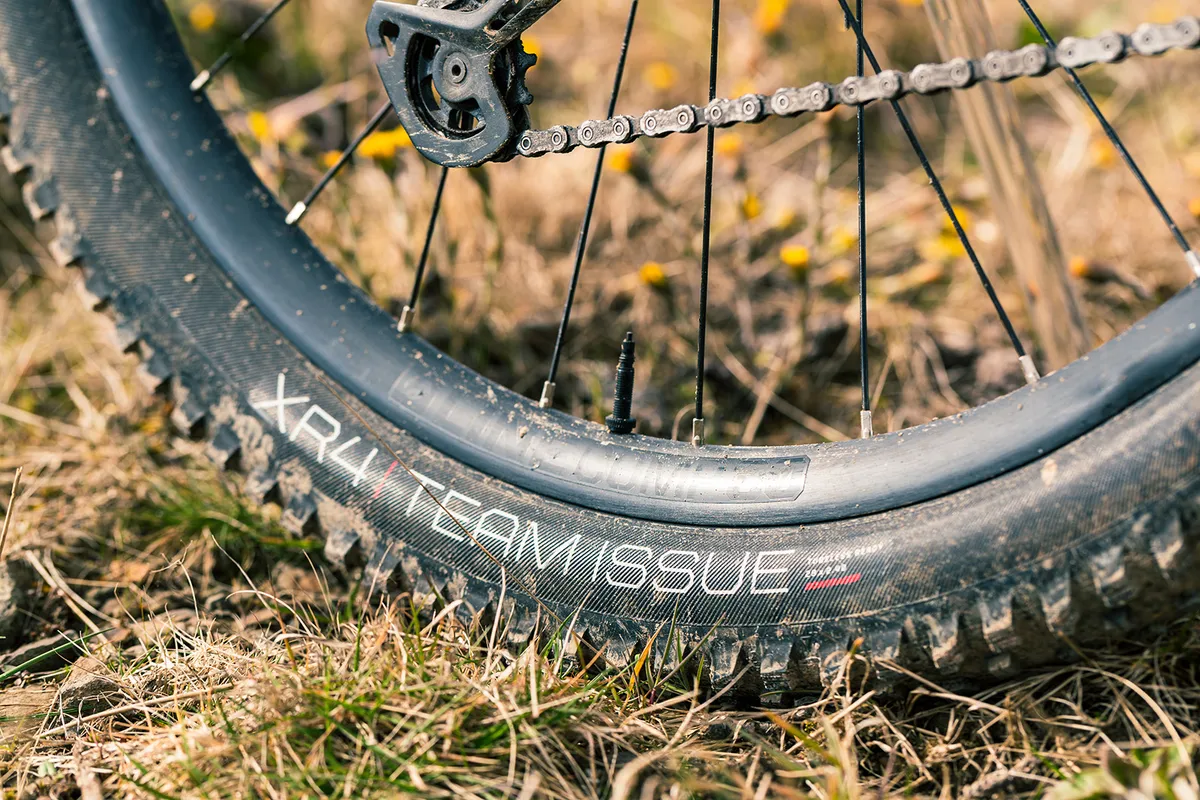
The Bontrager XR4s are a little slick for damp off-piste conditions, with a rounded profile and shallow tread blocks tending to skate over the surface rather than dig in. However, if conditions are dry, they happily transfer power through their mid-depth treads.
The trade-off is they roll fast and are communicative on the limit, letting go predictably. They provide acceptable grip on surfaced trails and leaf mulch, and don’t drag on tarmac.
The shock lockout lever on the Super Deluxe has an uncomfortable-to-operate indexed notch, which snaps open unpredictably, making it feel agricultural to use (especially with cold fingers). However, it does provide a severe but effective platform when climbing. In contrast, the SID Select fork lockout is a rather spongy affair.
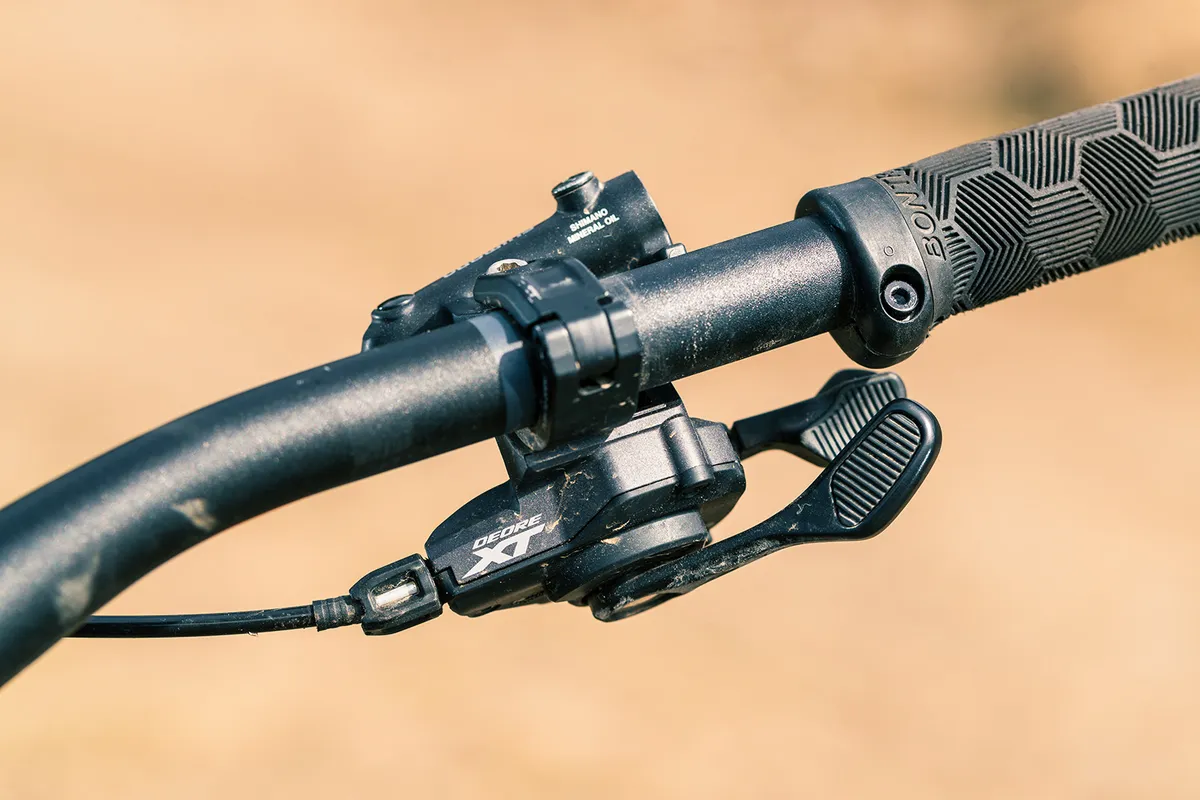
Overall, the geometry and crisp Shimano shifting mean it’s easy to winch your way up to the top of a peak.
It does lack the taut eagerness of XC-derived downcountry rigs such as the Scott Spark, which strain at the leash to attack every climb, whereas the Top Fuel prefers to lope along comfortably.
As downcountry bikes go, the Top Fuel’s forward pivot position, placid anti-squat curve and overall build are swayed toward delivering incredible overall performance and stable, low-effort climbing rather than scintillating polka-dot-jersey-esque uphill sprints.
Furthermore, its 14.8kg weight separates it from the most dedicated downcountry bikes, which likely shed a kilo or two.
However, view it as a trail bike, and it knocks the socks off most traditional trail bikes when pointed up a hill.
Trek Top Fuel 8 descending performance
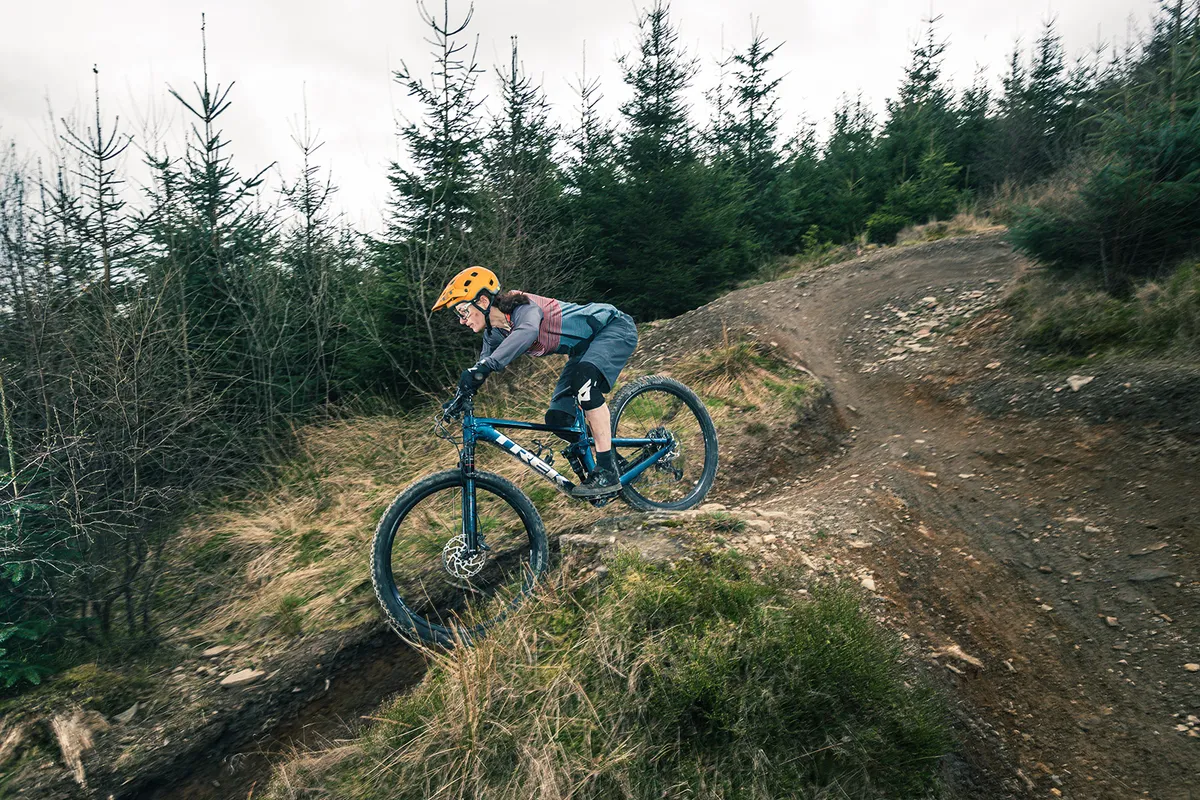
Point it downhill and the flickable chassis is easy to manoeuvre: if you’ve felt over-biked and sluggish on a 140mm trail bike, this is the answer.
Whereas some downcountry bikes are XC race rigs on steroids – devastatingly efficient on trail-centre loops, but unwieldy descenders – the Top Fuel feels as though Trek has tautened and lightened its Remedy trail bike.
Again, look at it as a trail bike, rather than a downcountry bike, and you’ll appreciate that its quality, not quantity, of suspension that often does the bulk of the work when it comes to descending, especially when backed up with really good geometry and decent kit.
While the Top Fuel lacks athletic fervour, it feels exuberant and cheeky, goading you into manuals and riding the trail playfully.
With predictable cornering manners and progressive-feeling rear-suspension kinematics, thanks to its forward pivot point, this bike is devastating on the descents.
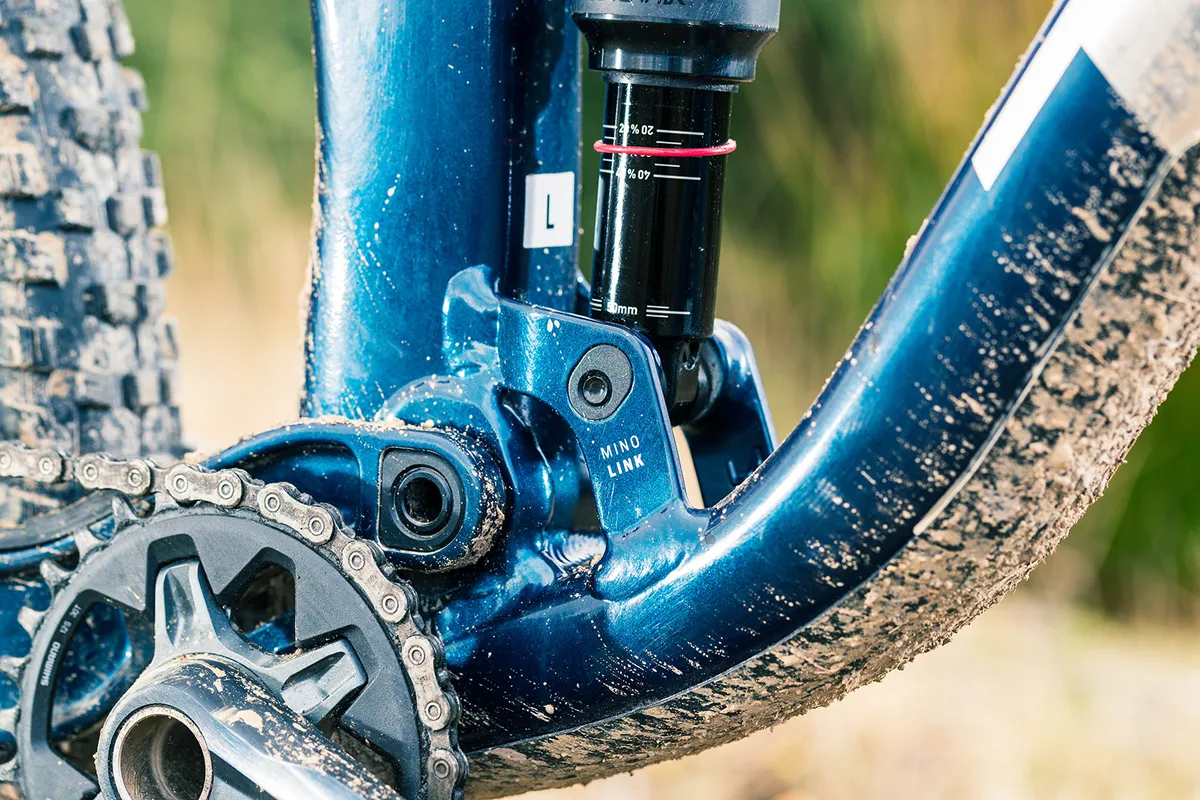
Rather than insulating you from every bump, the Top Fuel feels like a bike that works with you, involving the rider in the glory of a corner well hit or an obstacle correctly anticipated. It flatters your moments of brilliance but buffers any mistakes stoically.
Indeed, the level of grip and confidence is so high that it’s not until you get onto rougher black trails or find yourself offline that you need to brace for impact – and remember this isn’t an enduro bike.
This means it’s easy to inadvertently throw the Top Fuel way out of its depth and get carried away with the fun you’re having on the descent.
Over trail-centre features, the bike has an addictive personality. It has pop for days, encouraging you to hop, skip and jump your way over the trail, leaving the ground at every opportunity.
Spy a rocky or rooty take-off, and the Top Fuel seems to want you to bounce the front tyre off the top and pull the bike skyward, before the low BB, and long front end scream to be slung through the following berm as fast as you dare.
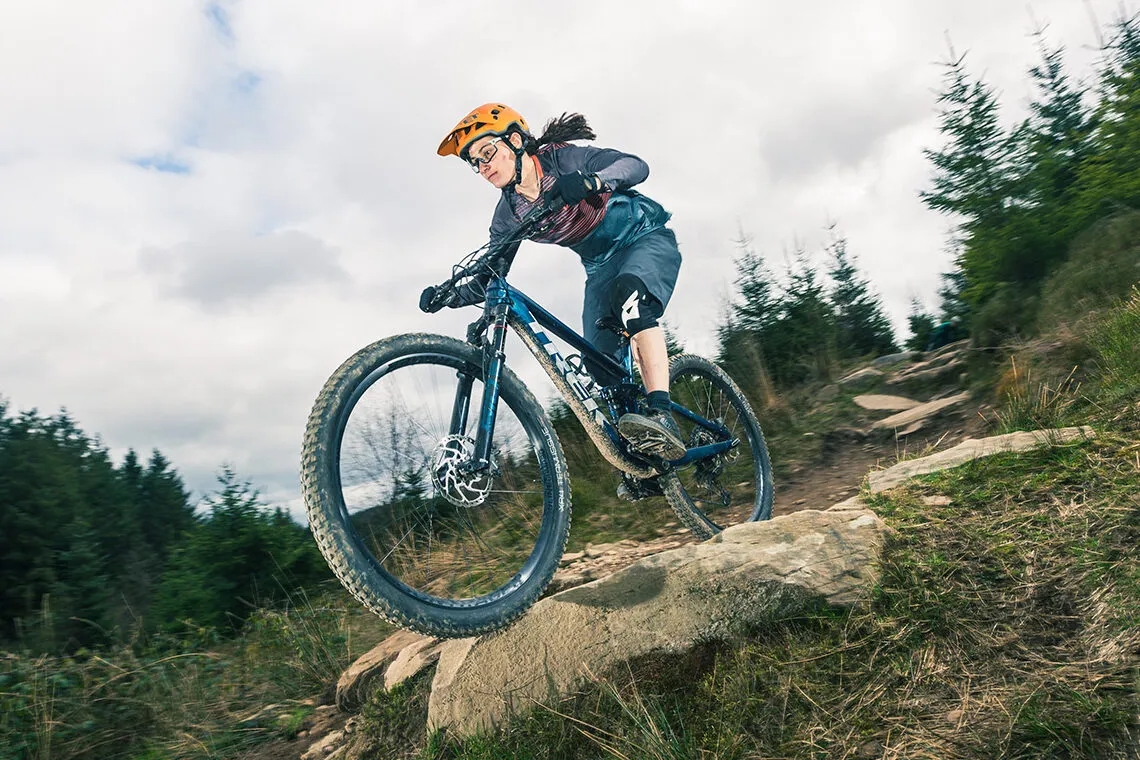
Take it to the trees, and the wide Bontrager-branded bars and short stem, and tight 435mm chainstays, work together to ensure direction changes are jet-boat rather than oil tanker in speed, while the bike’s reaction times to pedal inputs put Usain Bolt’s to shame.
Hammer it has hard as you can into jumbled rocks or amassed roots and the fork can twang a bit, but the 120mm back end is also going to struggle when you really batter it through the chunder, despite the shock’s progression later in its stroke.
Spend a little bit of time learning how the bike likes to be ridden and you’ll find yourself hunting out opportunities to jump over these or smooth the line with finesse anyway.
Okay, if you spend your weekends searching out the gnarliest lines, then the Top Fuel might not be for you – but there are other bikes in this category that’ll float your boat.
The four-piston Shimano brakes offer predictable, yet punchy power, so whether you’re grabbing a fistful of stopping power when you’re hauling down the trail, or deftly trying to shimmy down a tight, steep, slow-speed tech-fest, you’re in ultimate control.
Yes, the small rotors do lack some outright power, but at least boosting their size is a quick, easy and cheap way of adding braking grunt.
For the majority of everyday trail riders, the Top Fuel has every trick in the book ready to pull out at a moment’s notice, whether you’re rallying trail centres, carving turns in the woods, or developing your skills on steeper, more technical terrain.
How does the Trek Top Fuel 8 compare with the YT Izzo Core 2?
In terms of a light and fast machine for tackling less technically demanding trails, the YT Izzo Core 2 seems like the obvious comparison.
Both bikes give a spirited fight on the climbs. The Trek is perhaps a little perkier, with a taut back end that doesn’t waste your watts.
The Izzo might not be quite as stable as the Trek under pedalling pressure, and the lockout is a pain to access, but the Maxxis Forekaster tyres zip along with minimal resistance, really making the bike fly up climbs.
Add in a supple early stroke that helps generate grip, and I found the Izzo gave me little to complain about uphill.
Despite very much coming from the downcountry side of things, the Top Fuel 8 is a ripper on the descents. The tyres play a massive part in this, with a more pronounced shoulder tread than the Forekasters on the Izzo. This makes the Top Fuel much more confident when pushing hard on mixed surfaces.
The suspension is a bit of a toss-up here. Fox’s 34 Performance fork on the Izzo is a smooth operator, while the SID feels a little more aggressive in its damping. At the back, though it has less travel, the Trek seems to deal with repeated big hits a little better, though I’d say the Izzo is smoother on low-amplitude chatter.
Trek Top Fuel 8 bottom line
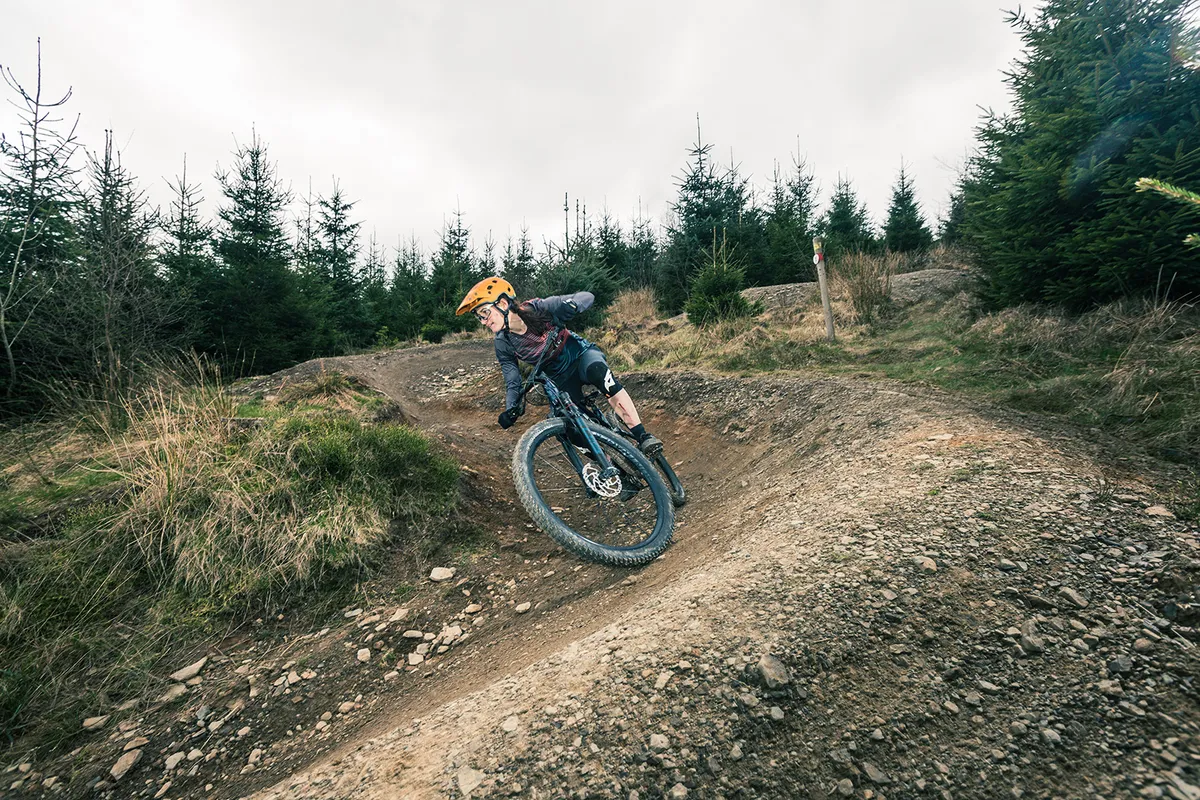
Picking a 120mm-travel bike as my Trail Bike of the Year took a bit of soul searching. The diversity of bikes available aimed at the trail rider is as broad as the trails on which they’re ridden.
But the Top Fuel stole my heart (if not my head) in 2022. A trail bike needs to do it all – climb well, descend with authority, and ask to come back for more and more.
The Top Fuel gets to the top of the hill without making us yearn for our XC rigs, made me grin like a Cheshire cat on fast flow trails and rarely baulked when gradients steepened and a firm grip on bar and brake lever was required to safely navigate to the bottom.
If you want a bike to do it all and trust that it’s quality, not quantity of suspension that does the bulk of the work, give a shorter-travel, more agile bike a shot – you probably won’t regret it.
Trail Bike of the Year 2022 | How we tested
We expect a lot of the modern trail bike, so testing to find this year’s Trail Bike of the Year not only had to be thorough, but incredibly varied, too.
This meant spending one day sitting in the saddle for hours on end ticking off miles of singletrack, and the next blasting down bike park runs, giving the bikes a proper hammering in the process.
Of course, there was a decent amount of everything in the middle, including scrabbling up steep, forested climbs before sliding back down and, quite simply, just playing about in the woods.
Most of our testing took place around the Forest of Dean or in south Wales, with a cheeky trip to Scotland thrown in for good measure.
To come out on top, we wanted a bike that could climb with close to the efficiency of the best cross-country mountain bikes, but still manage to descend with some of the composure you’re likely to find from an enduro bike.
If the bike felt sluggish and lethargic on an all-day epic, or skittish and nervous when tackling a technical descent, then it simply wouldn’t make the cut as this year’s best trail bike.
With such a competitive selection of bikes on test, deciding on the winner happened late in the day. In fact, it wasn’t until we were riding on the final photo shoot that we settled on the 2022 winner, which just goes to show how tough the competition has been.
Our Trail Bike of the Year 2022 contenders are:
- Canyon Spectral 125 CF7
- Cube Stereo 120 HPC TM 29
- Kona Process 134 DL 29
- Nukeproof Reactor 290 Alloy Pro
- Specialized Stumpjumper Comp
- Trek Top Fuel 8
- Vitus Escarpe 29 CRX
- YT Izzo Core 2
Thanks to…
Thanks to our sponsors MET Helmets, Bluegrass Protection and BikePark Wales for their support in making Bike of the Year happen.
Product
| Brand | trek |
| Price | 5500.00 AUD,4099.00 EUR,3850.00 GBP,4000.00 USD |
| Weight | 14.8000, KILOGRAM (L) - without pedals |
Features
| Fork | RockShox SID 120mm travel |
| br_stem | Bontrager Elite, 50mm |
| br_chain | Shimano SLX |
| br_frame | Aluminium, 120mm travel |
| Tyres | Bontrager XR4 Team Issue, 29x2.40in |
| br_brakes | Shimano BR MT520, 180/160mm rotors |
| br_cranks | Shimano Deore, 30t |
| br_saddle | Bontrager Arvada |
| br_wheels | Bontrager Line Comp 30 |
| br_headset | KnockBlock 2 |
| br_shifter | Shimano XT |
| br_cassette | Shimano SLX |
| br_seatpost | TranzX 170mm |
| br_gripsTape | Bontrager XR Trail Comp |
| br_handlebar | Bontrager Line 780mm |
| br_rearShock | RockShox Deluxe Ultimate |
| br_bottomBracket | Shimano |
| br_availableSizes | S, M, ML, L, XL, XXL |
| br_rearDerailleur | Shimano XT |
